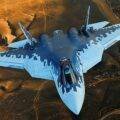NASA reports that it has tested a new 3D-printed rocket engine component made from a novel material that could help to hasten an era of deep space flights that are able to carry larger payloads.
The rocket nozzle is assembled from a new weldable variety of aluminum that is heat-resistant enough for use in rockets but is also more lightweight than other nozzles used in conventional rocket engines.
The component’s development was the result of the combined efforts of engineers at NASA’s Marshall Space Flight Center and their industry partners at Colorado-based Elementum 3D.
NASA Material Development for Future Deep Space Missions
Aluminum is an ideal material for the development of rocket components because of its ability to provide significant strength without increased weight since it is a low-density metal. The downside of its use is that it also traditionally possesses minimal tolerance to extreme heat, and is notorious for cracking when being welded.
Recognizing its potential, engineers with NASA’s Reactive Additive Manufacturing for the Fourth Industrial Revolution (RAMFIRE) project decided to see whether aluminum could be engineered in such a way that it could become a viable material for use in 3D printing rocket components.
The result was A6061-RAM2, a novel aluminum variant that, when paired with a specialized powder in a process known as laser powder-directed energy deposition, or LP-DED, succeeded in producing the RAMFIRE rocket nozzles.


A6061-RAM2 is only one of the remarkable NASA material innovations seen in recent years. GRX-810, a similar alloy the space agency has developed, is capable of withstanding extreme temperatures and other demanding environmental conditions, according to past research into the material’s capabilities.
Smart Simplicity for NASA Material Breakthroughs
NASA’s RAMFIRE project relies on a simple, but effective design element to help ensure that the nozzles are kept at temperatures that will prevent melting: the inclusion of small internal channels that aid in heat dissipation.
Although conventional nozzles may require hundreds, or even close to a thousand small, conjoined parts, the RAMFIRE nozzles are single-piece constructions, which helps to significantly reduce manufacturing and assembly time.
Going beyond just rocket nozzles, NASA thinks the novel alloy A6061-RAM2 could lead to the production of other lightweight components used in rockets that could reduce weight requirements without compromising strength, which could potentially allow for expanded cargo capacity for crewed missions to the Moon and Mars, as well as future deep space missions equipped with payloads comprised of scientific instruments and the fuel sources they will rely on for power.
You can read more about NASA’s RAMFIRE program and the novel use of 3D printed aluminum parts here.
Micah Hanks is the Editor-in-Chief and Co-Founder of The Debrief. He can be reached by email at micah@thedebrief.org. Follow his work at micahhanks.com and on Twitter: @MicahHanks.

